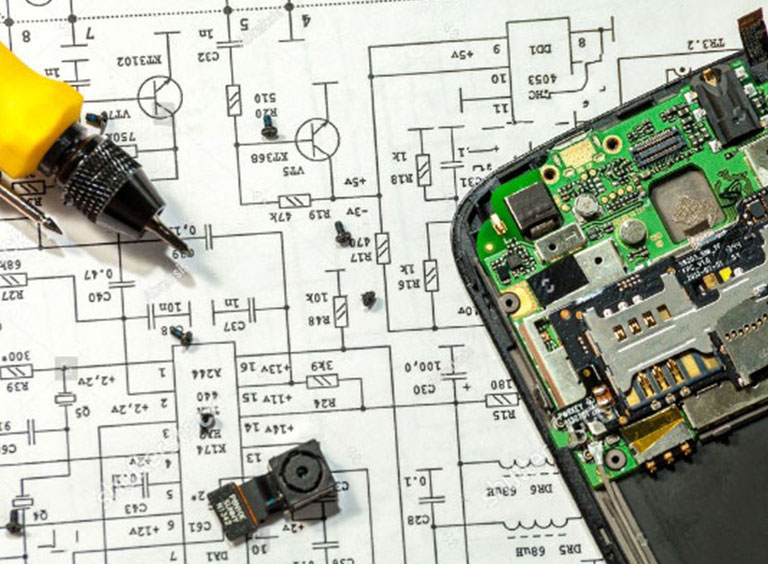Mixed Assembly Placement
Surface Mount Devices(SMDs) are attached to the same side of the Printed Circuit Board (PCB) as the solder pads, and these pads can be on both sides of the PCB.
Pin-Through-Hole devices (PTH) are place on the top side of the PCB. They have their leads insert through holes in the PCB, and are solder from the bottom usually through a wave soldering process.
PCB circuit assemblies using both types of components, SMD and PTH. They require special handling because they each use different soldering techniques.
Surface Mount Technology (SMT) Soldering
Reflow soldering is use to attach SMDS to PCBs , or they can be wave soldered.
In the reflow process, solder paste is apply to the solder pads of the PCB using a stencil, and the SMDs are place with their leads on top of the solder paste.

All staff IPC certified, we don’t compromise on quality and standard.
Contact Us at: 07507 967421 Or Get A Quote

Both the SMDs and the PCB are heat, reflowing (melting) the solder, connecting the leads of the components to the solder pads on the PCB or.
To wave solder, when connecting the SMDs to the PCB, instead of reflowing the solder paste, a wave of solder can use. However, after the components are place on the board, it is imperative to turnover board for proper functioning. To keep the components from falling off the PCB as it’s turn over for wave soldering, and having the wave of solder wash off any remaining SMDs, the SMDs first have to be glue in place onto the PCB.
Pin Through Hole Soldering
Pin-Through-Hole devices, or Plated Through-hole Devices (PTH) must be wave soldered
After the PTH components are insert into the holes of the PCB, and without turning the board over, the PCB is pass over the wave of solder, connecting the component leads to the print circuit board.
Mixed Component Assembly Soldering
When both SMT and pin-through-the-hole devices are use on the same assembly, several steps are need for soldering:
- On the “component side” of the PCB, the SMDs are place and reflow solder;
- The board is turn over and on the “solder side,”without soldering them; the SMDs are then glue in place;
- The board is turn over again, and passing their leads through the holes in the PCB from the “component side”. PTH components are machine insert;
- At this time, special-handling components are insert into the PCB by hand;
- The “solder side” of the PCB is wave solder, soldering the SMDs glue to the “solder side” of the PCB, the leads of the PTH components, and the leads of the special handling components, all in one step
- Test the board.
Mixed Component Assembly Issues
Before submitting the PCB for manufacturing, some design issues are of special concern and need attention:
- To allow maneuvering of the insertion machines, PTH devices require extra room on the PCB;
- When making decisions about assembly using lead-free techniques, the thermal profile issues affecting the soldering process should be addressed.
Mixed Component Assembly
Sarkar Lts has both experience and expertise in all three types of assembly SMD, PTH, and mixture of both SMD and PTH.
Let our engineers at Sarkar Ltd work with you on the engineering and design of your mixed component assemblies.
All staff IPC certified, we don’t compromise on quality and standard.
Contact Us at: 07507 967421 Or Get A Quote
Why choose us?
-
Prototypes to large volume production runs
-
Equipped with the latest manufacturing technology
-
Over 20 years of experience
-
Friendly and approachable, highly trained engineers
-
Internationally recognised quality standards
-
However complex or basic your requirements are - We have the technology!
-
Time-served technicians, Superior finishing & Rigorous testing
Contact Us
Our Location
All staff IPC certified, we don’t compromise on quality and standard.
